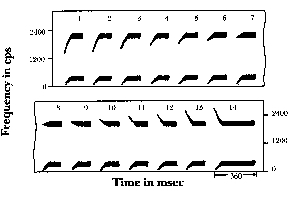
Demonstrating Overtones and Formants
Vowels can be uniquely identified by concentrations of overtones called formants
. Formants in phonetics are concentrations of overtones
one above
the other. An overtone is one of the higher
tones produced simultaneously with the fundamental and that with the fundamental comprise a complex musical tone. Overtones determine the sound colour
(timbre), by which one may distinguish, e.g., between the same melody played on a violin or a flute. Likewise, the formants determine the unique vowel colour
of each vowel. In Tibetan and some Mongolian singing, this complex musical tone may be separated, so that the fundamental and the overtones are heard playing different melodies at the same time, continuously changing the voice quality. The following presentations by Anna-Maria Hefele demonstrate two issues relevant to our business: 1. one may hear simultaneously the fundamental and the overtones, separated; 2. one may hear the relationship between overtones and vowel formants: Anna-Maria Hefele produces these overtones by continuously shifting the shape of her mouth between [i] and [u]. Some phoneticians found that overtone singing is a powerful pedagogic tool to have students of phonetics realize the psychological reality of formants in generating vowels, rather than a mere diagram.